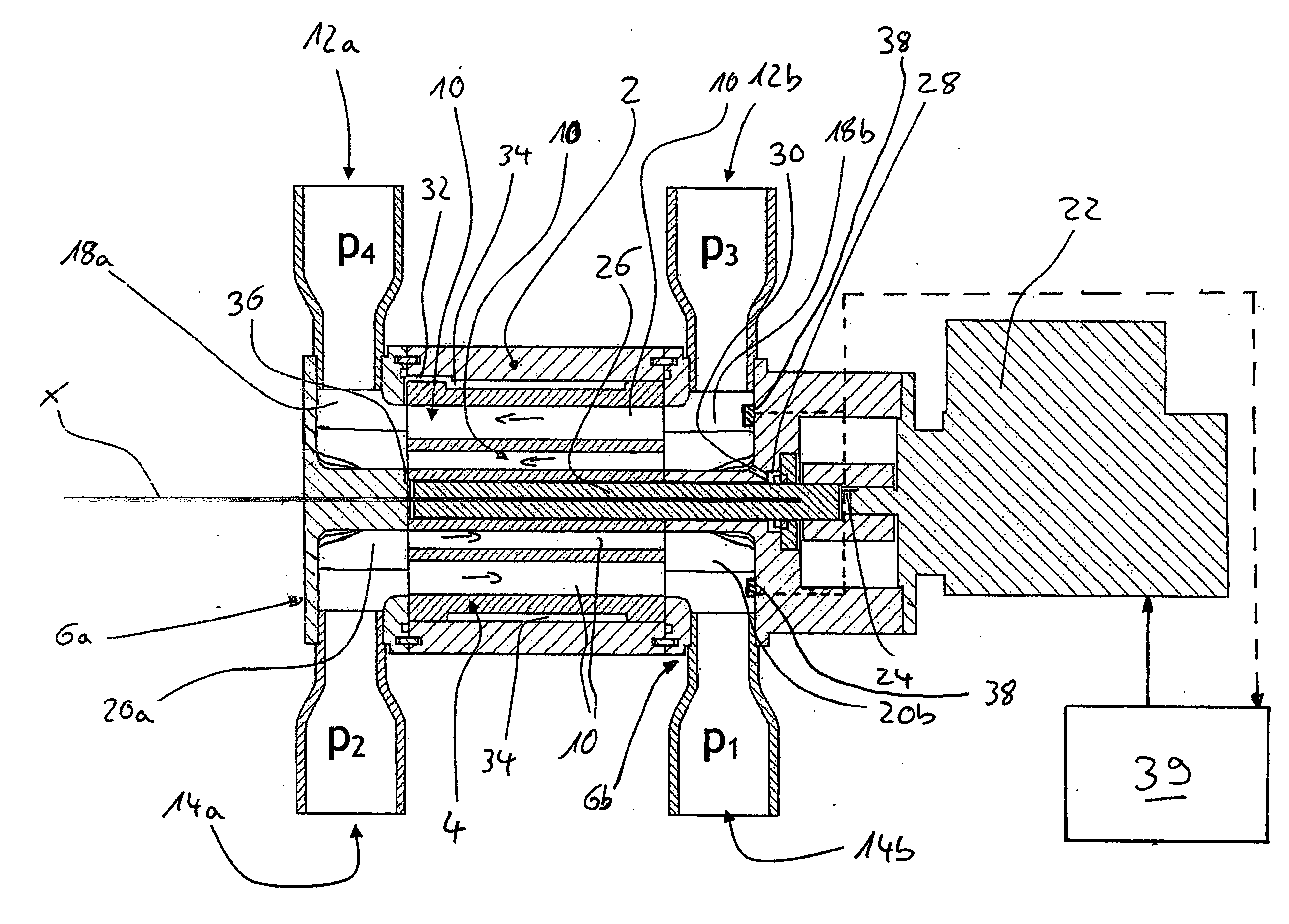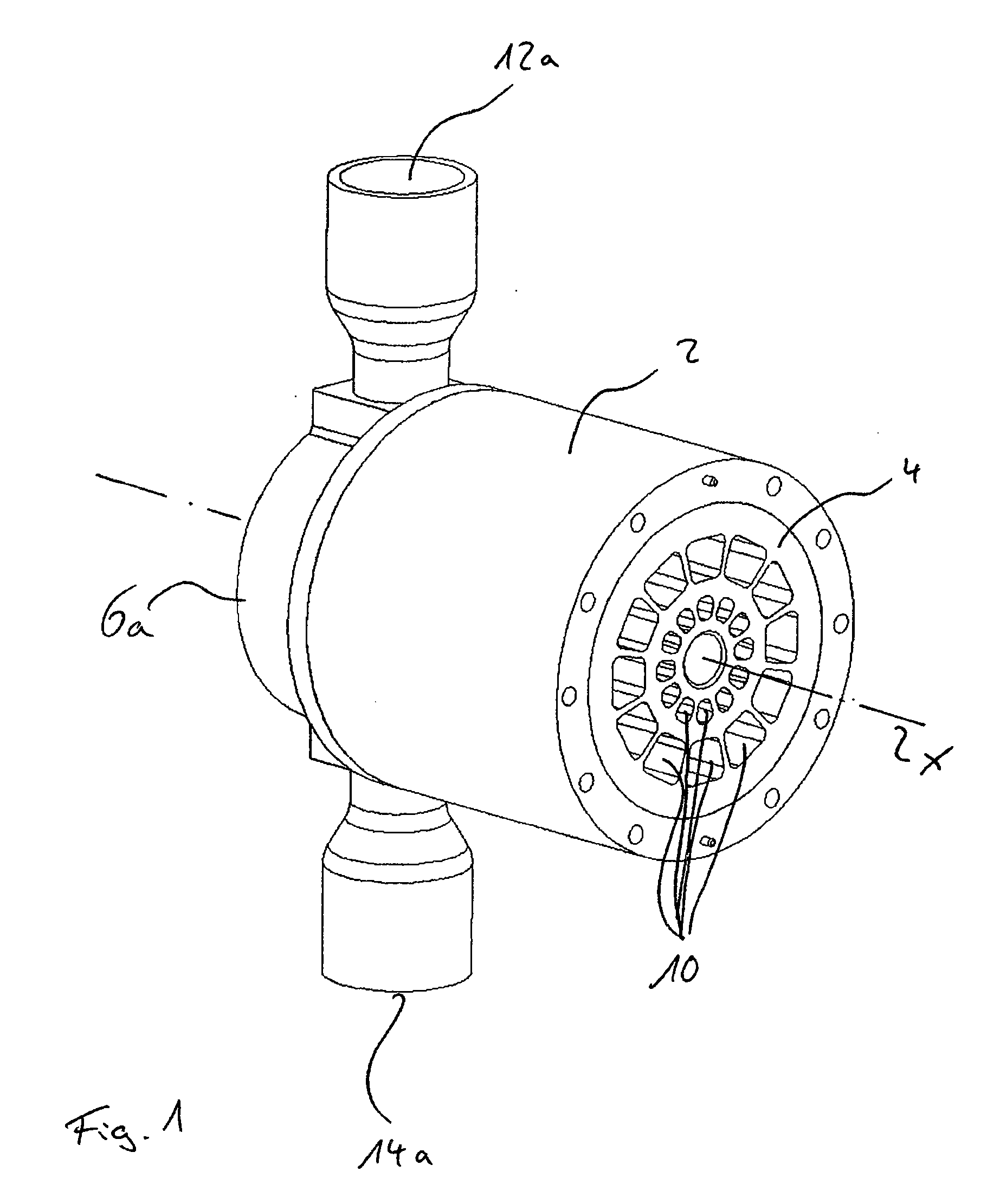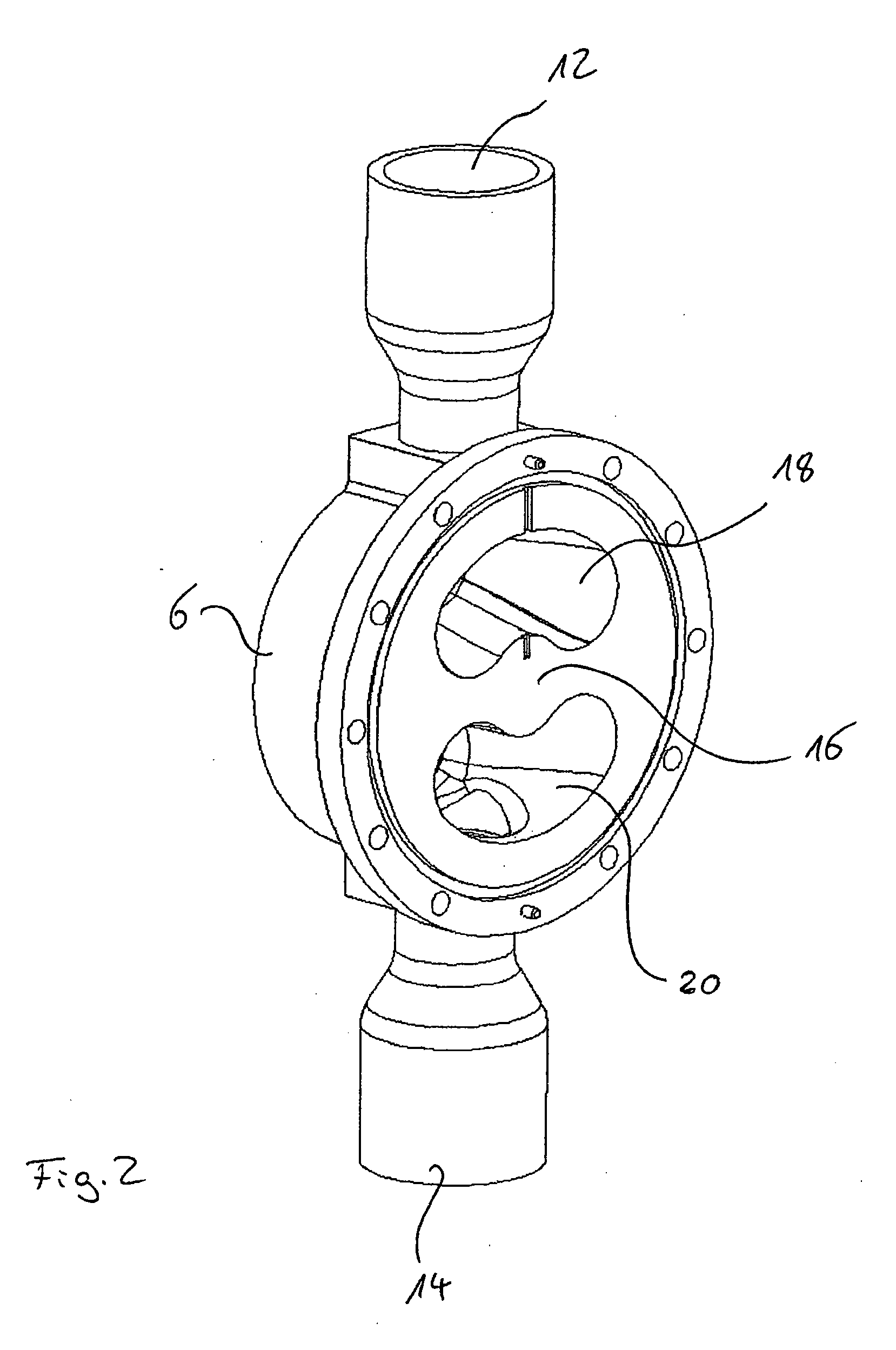Pressure exchanger for transmitting pressure energy from a first liquid stream to a second liquid stream
a pressure exchanger and liquid stream technology, applied in the direction of positive displacement liquid engine, pump components, pump control, etc., can solve the problem of unusable mixing of salt water and brine, and achieve the effect of accurate control or regulation of rotational speed
- Summary
- Abstract
- Description
- Claims
- Application Information
AI Technical Summary
Benefits of technology
Problems solved by technology
Method used
Image
Examples
Embodiment Construction
[0027]Certain terminology is used in the following description for convenience only and is not limiting. Unless specifically set forth herein, the terms “a,”“an” and “the” are not limited to one element, but instead should be read as meaning “at least one.” The terminology includes the words used herein, derivatives thereof and words of similar import.
[0028]Referring to the drawings in detail, wherein like numerals indicate like elements throughout the several views, the geometric construction of the pressure exchanger of the present invention corresponds essentially to the pressure exchanger known from EP 0 298 097 B 1. The pressure exchanger of the present invention comprises a cylindrical housing 2, in whose inside a rotor 4 is arranged in a rotatable manner. Thereby, the rotor 4 is rotatable about the longitudinal axis X of the housing 2 and rotor 4. The housing 2 at the two axial sides is closed in each case by a connection element 6. Both connection elements 6 are designed in ...
PUM
 Login to View More
Login to View More Abstract
Description
Claims
Application Information
 Login to View More
Login to View More - R&D
- Intellectual Property
- Life Sciences
- Materials
- Tech Scout
- Unparalleled Data Quality
- Higher Quality Content
- 60% Fewer Hallucinations
Browse by: Latest US Patents, China's latest patents, Technical Efficacy Thesaurus, Application Domain, Technology Topic, Popular Technical Reports.
© 2025 PatSnap. All rights reserved.Legal|Privacy policy|Modern Slavery Act Transparency Statement|Sitemap|About US| Contact US: help@patsnap.com



